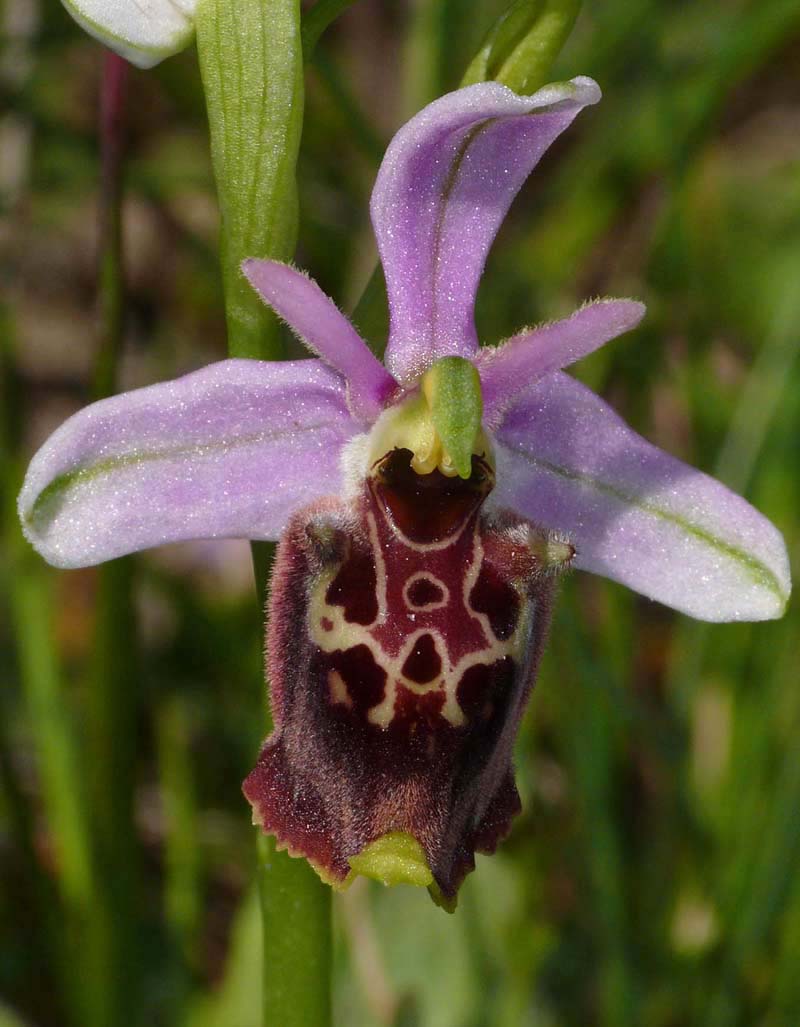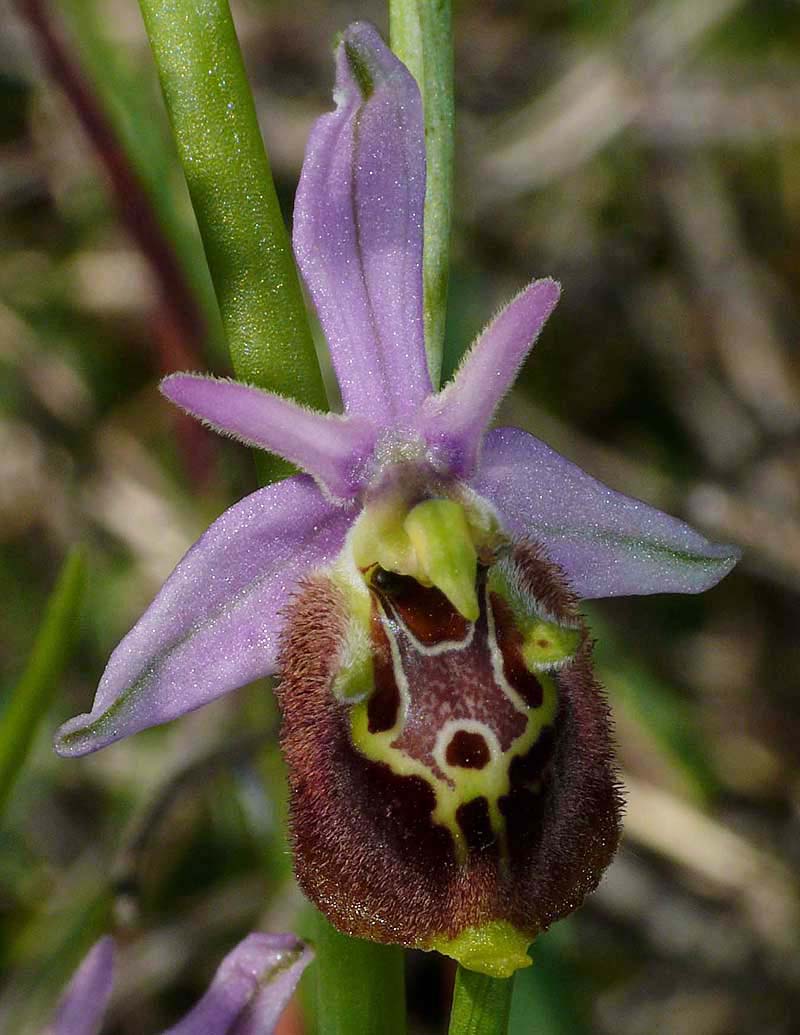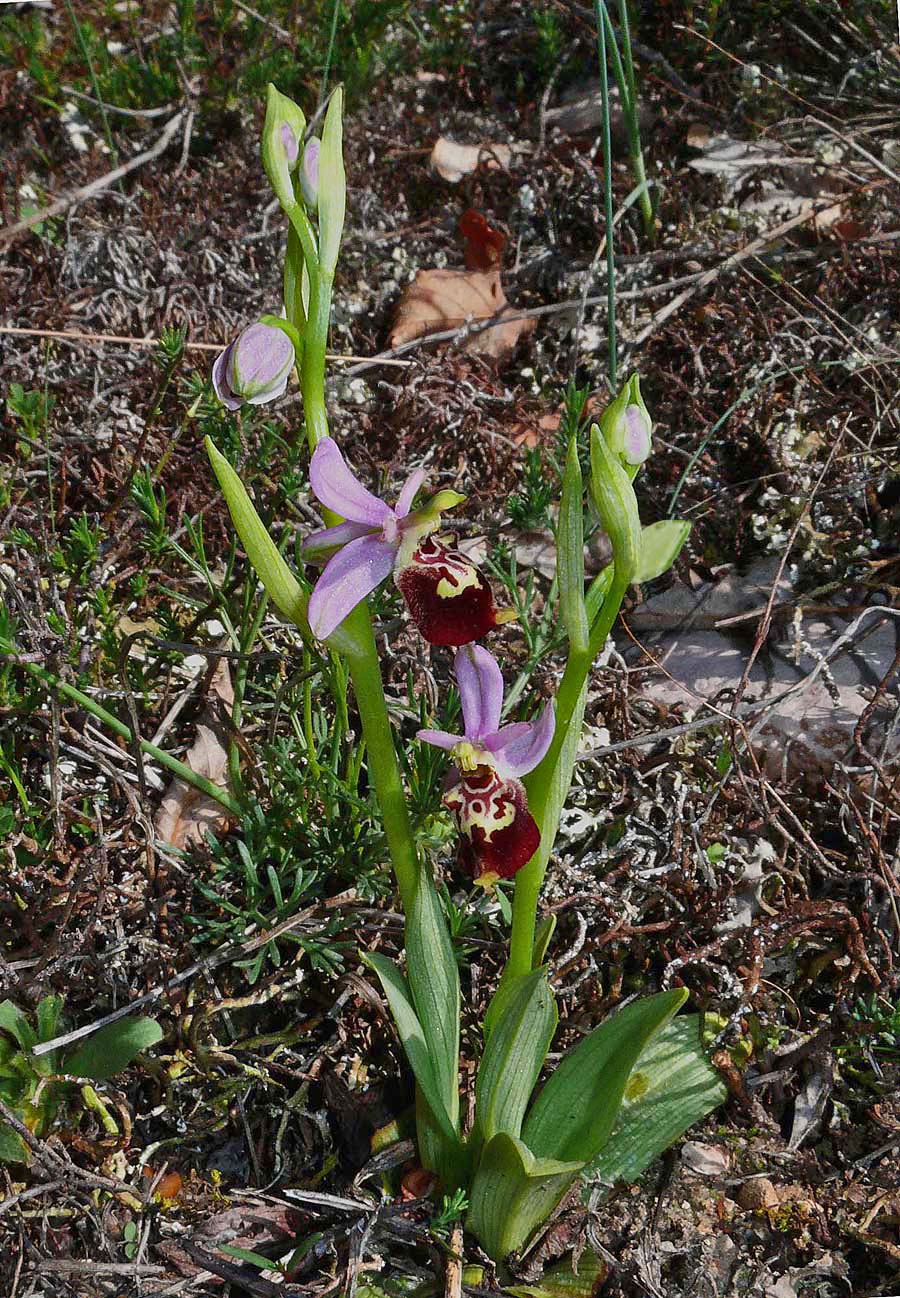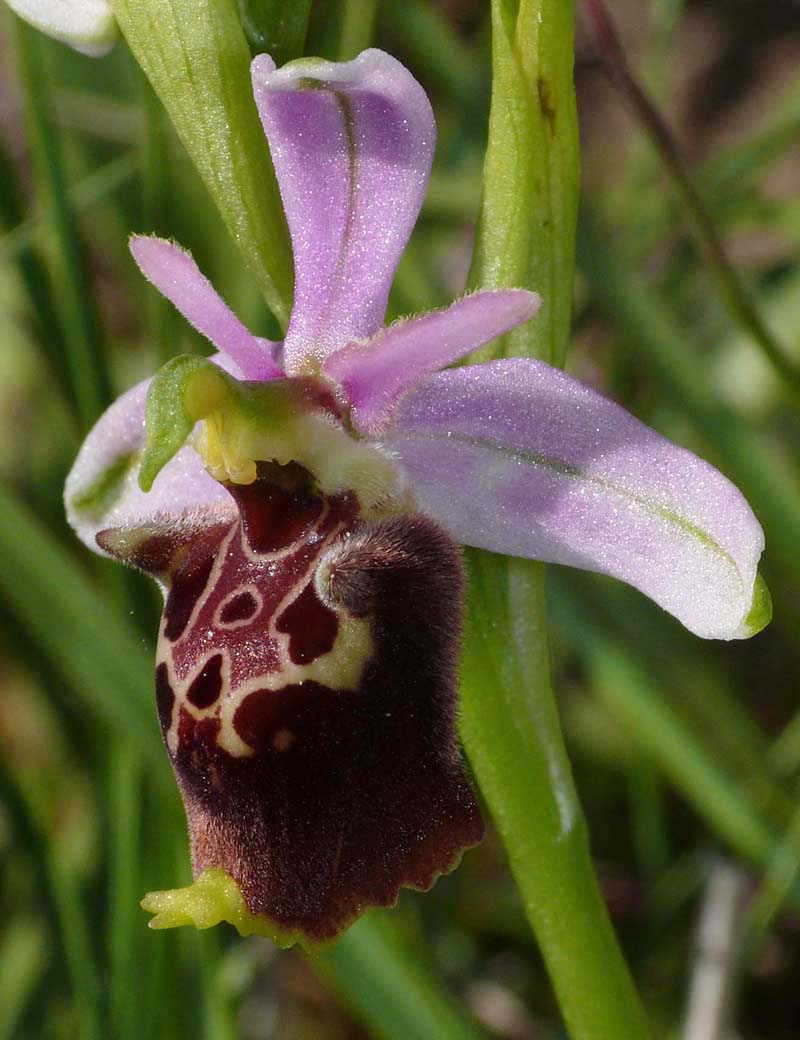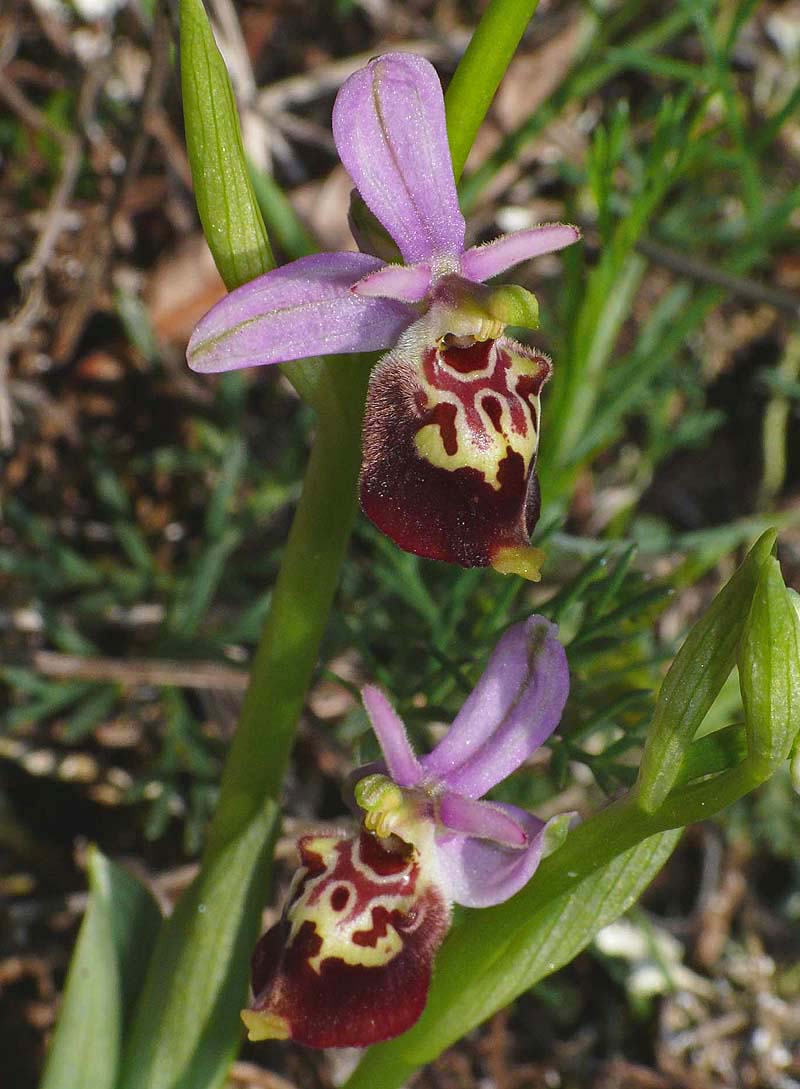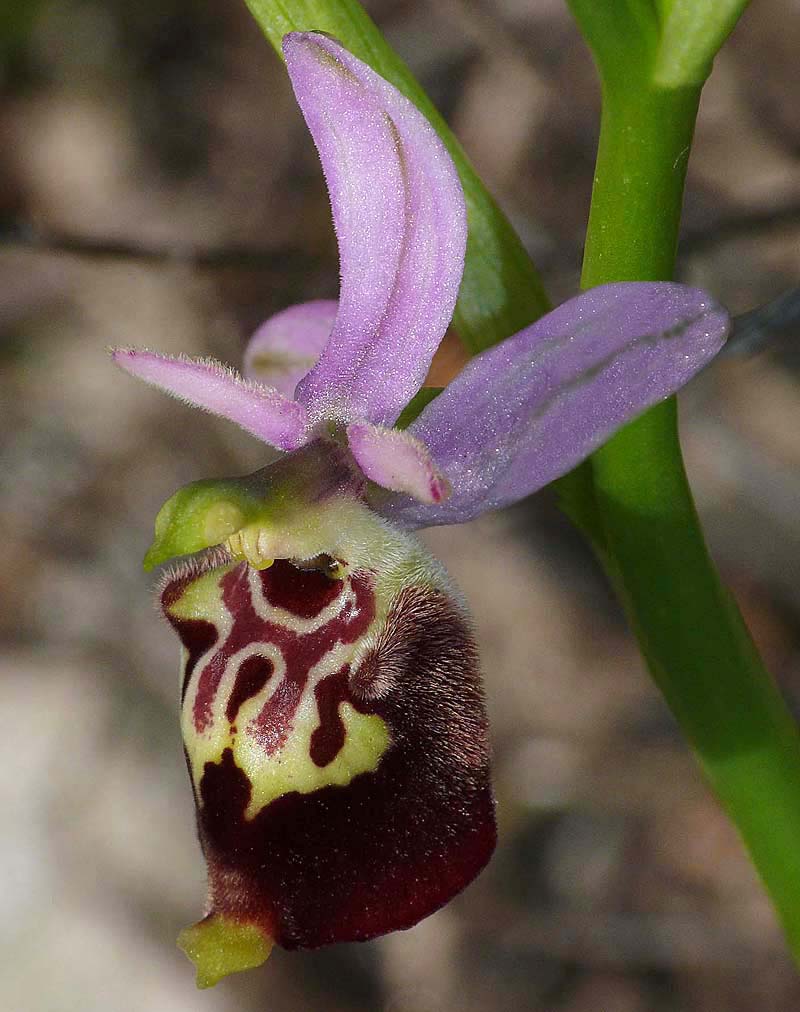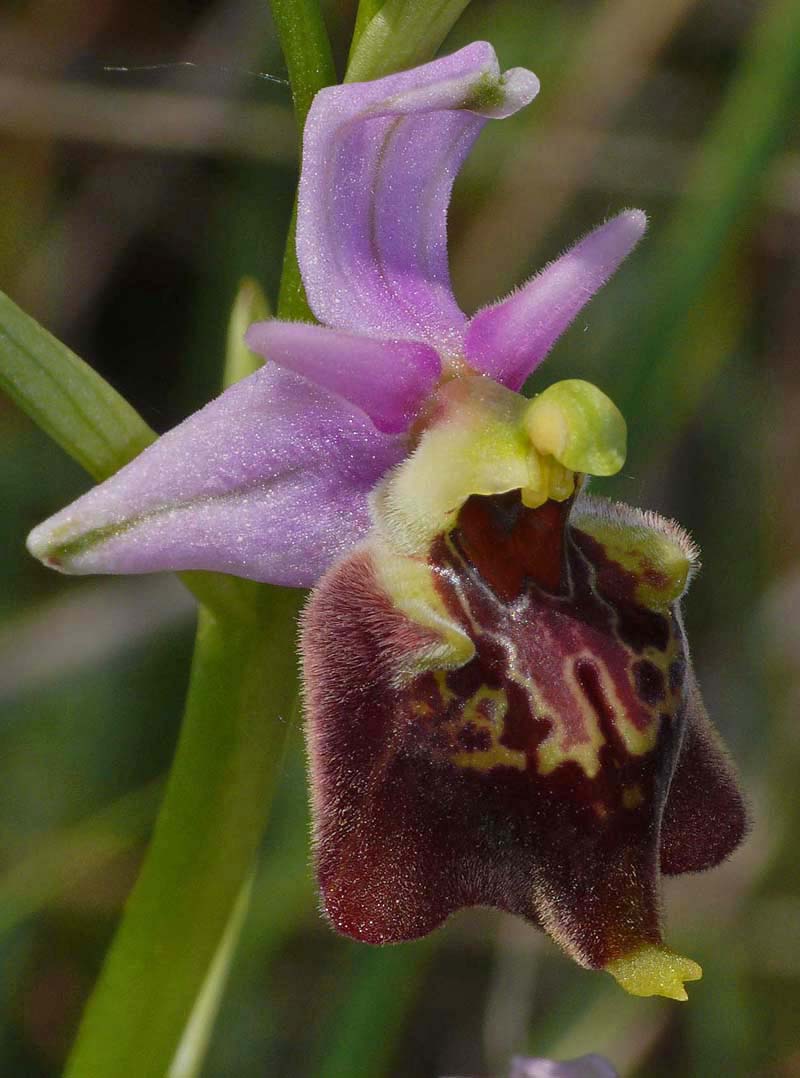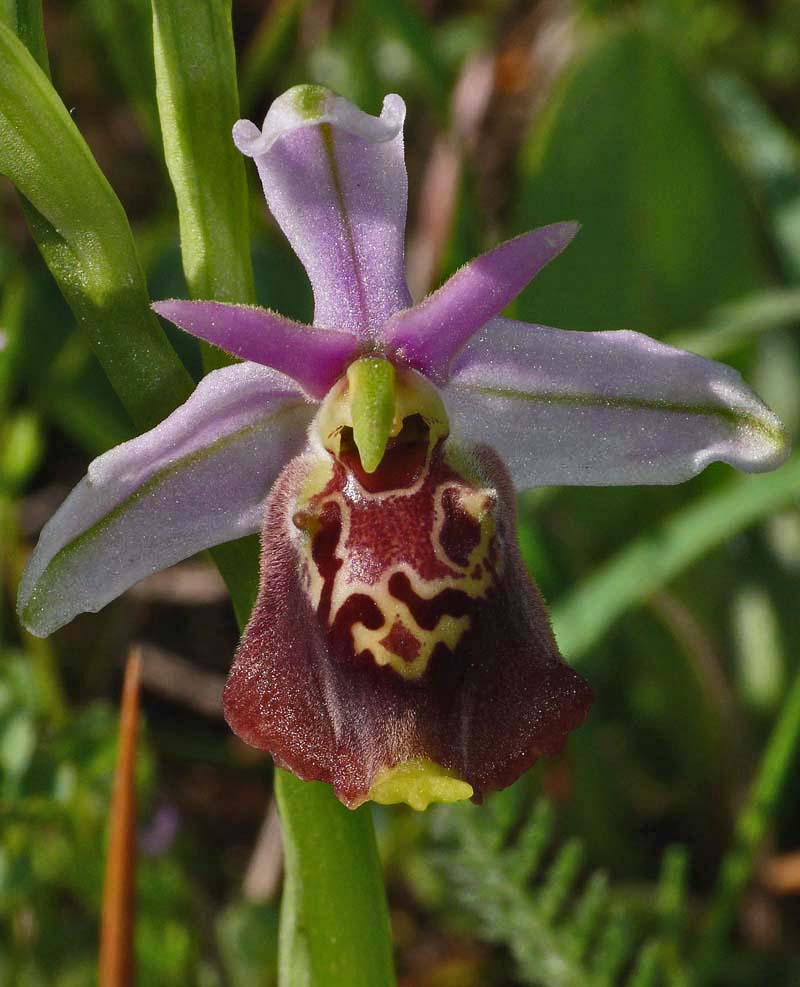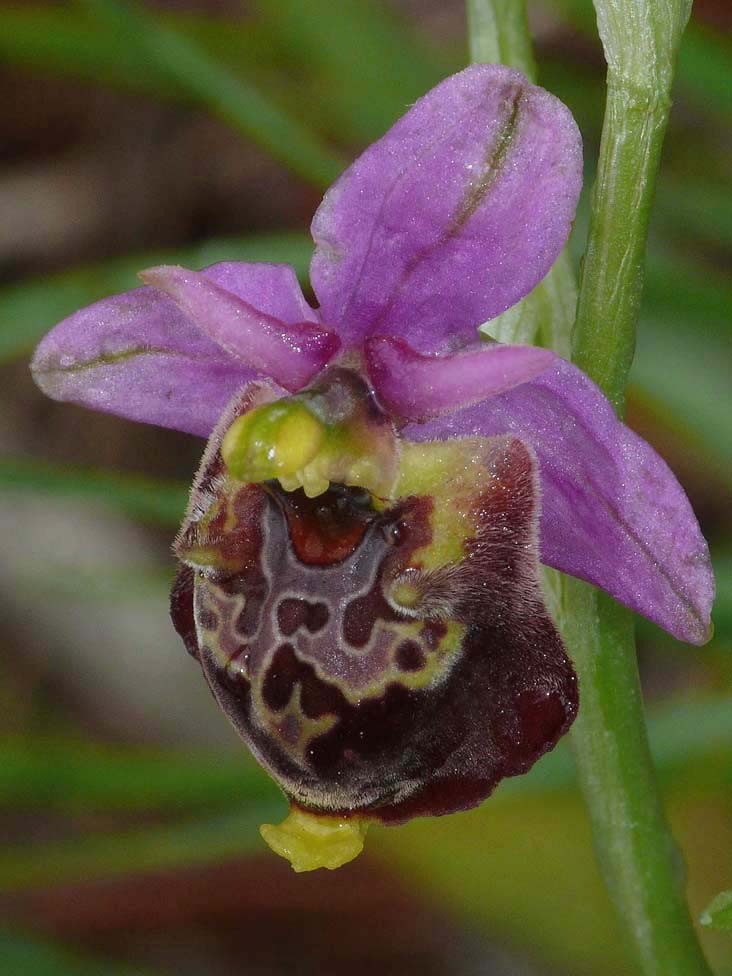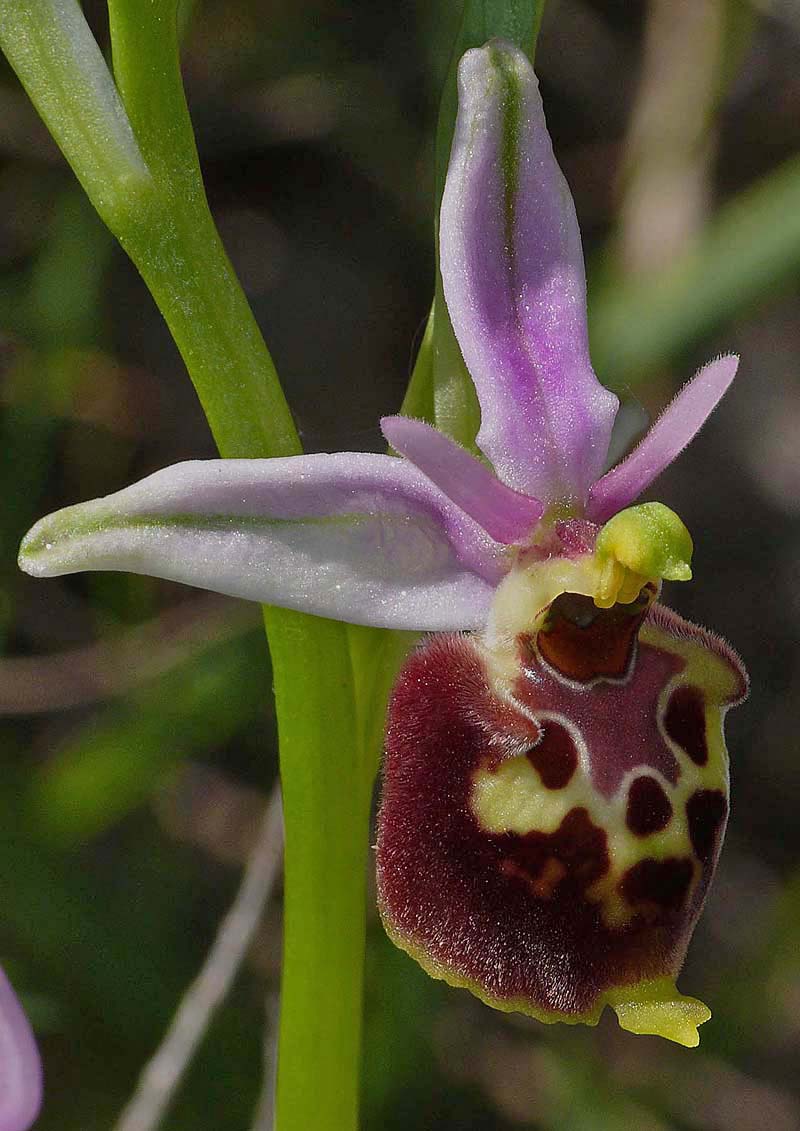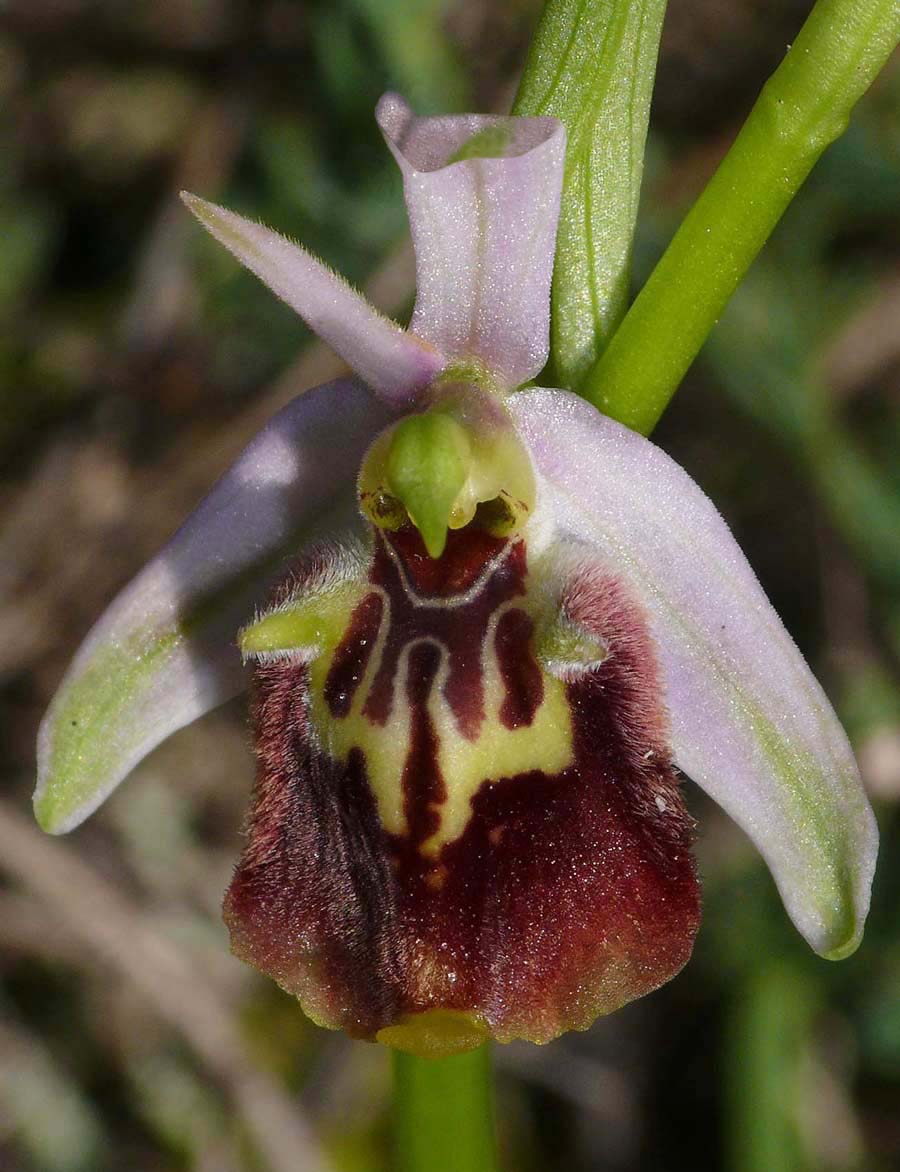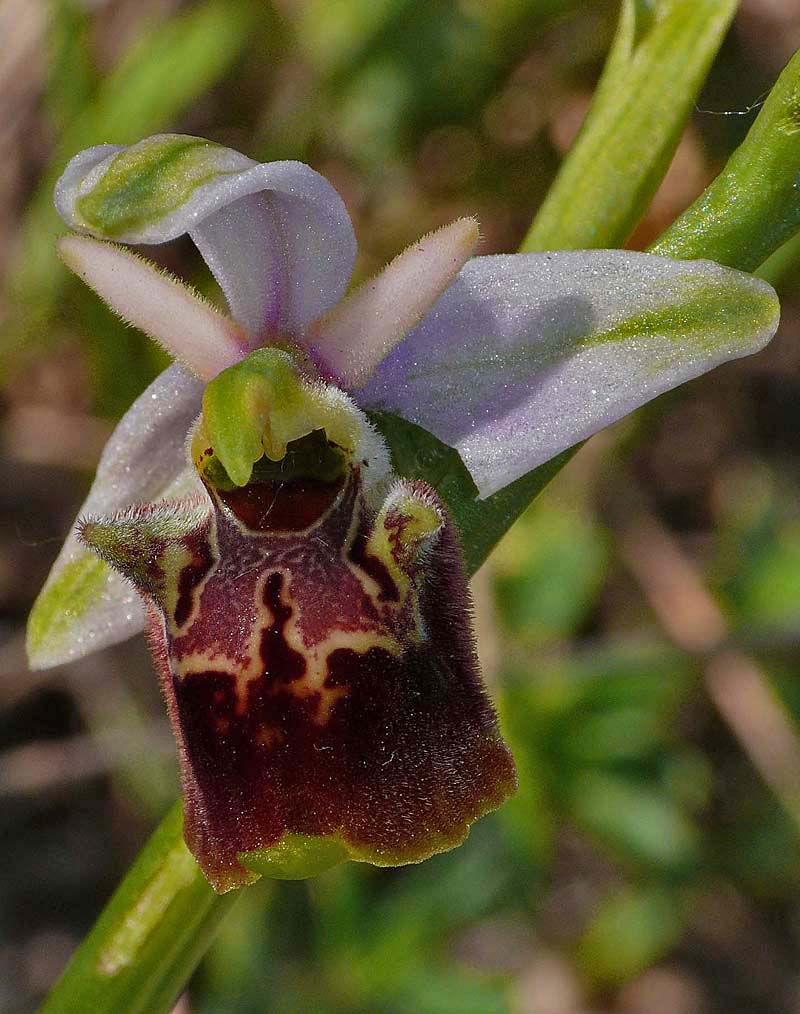This species was first described from Alpes-Maritimes, France in 1869 and its name refers to the long, pointed petals. O. linearis is a member of the 13 strong O. tetraloniae group which take their name from the Tetralonia genus of bees, these being the most significant pollinators of this family of Ophrys.
Several of this groups species are to be found in the Mediterranean and sub Mediterranean regions of southern France and northern Italy, where both natural variation and hybridization cause considerable problems with identification. It seems highly probable that this group has a polyphyletic origin encompassing genetic input from several other groups and this would certainly account for the high degree of morphological variability. O. linearis is not a common species but can be found locally in south east France as far north as Drome and across the Italian border in Tuscany and Umbria.
The key characteristics in identification are the petals which as its name suggests are long, thin and pointed. (these can be up to 8mm in length) As may be seen from the illustrations, the lip shape varies, ranging from globular to scolopaxoid and reminiscent of the Greek species O. calypsus v scolopaxoides., a common synonym of this species being O. pseudoscolopax. The specular pattern is also variable, usually complex, often marbled, sometimes candicoid and with a dark red basal field that is sometimes partly divided by a thin, upward pointing extension of the speculum. Many of these features remind one of O. dinarica which is now also known to be present in central Italy. Separating the two species can be difficult, particularly as O. dinarica can exhibit petals of similar length and shape.
The photos come from Drome (France), Tuscany and Umbria, dating from the first two weeks of May.
